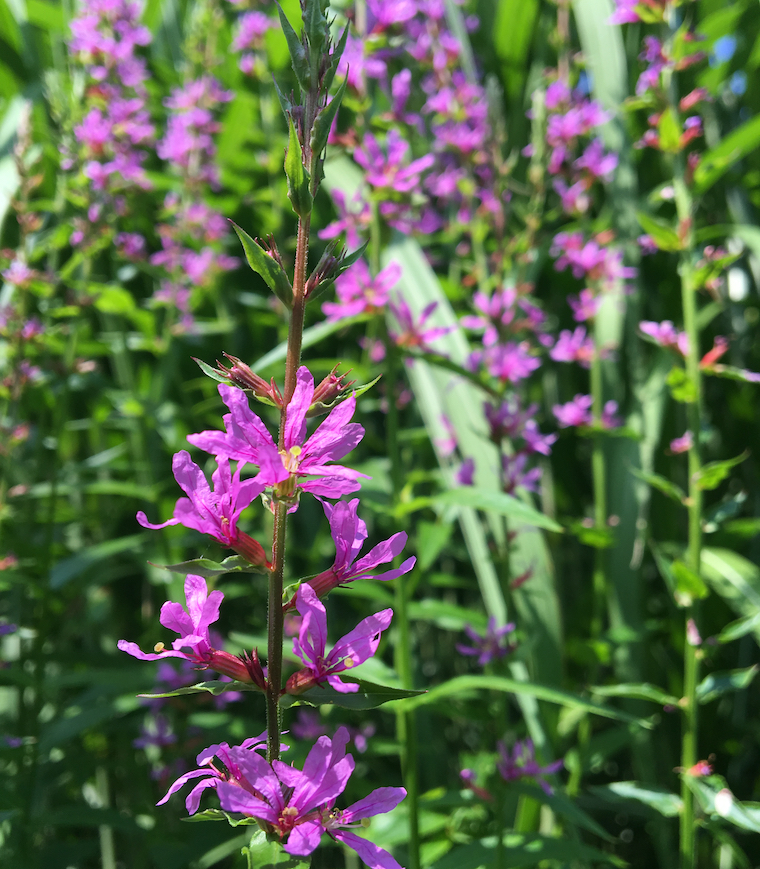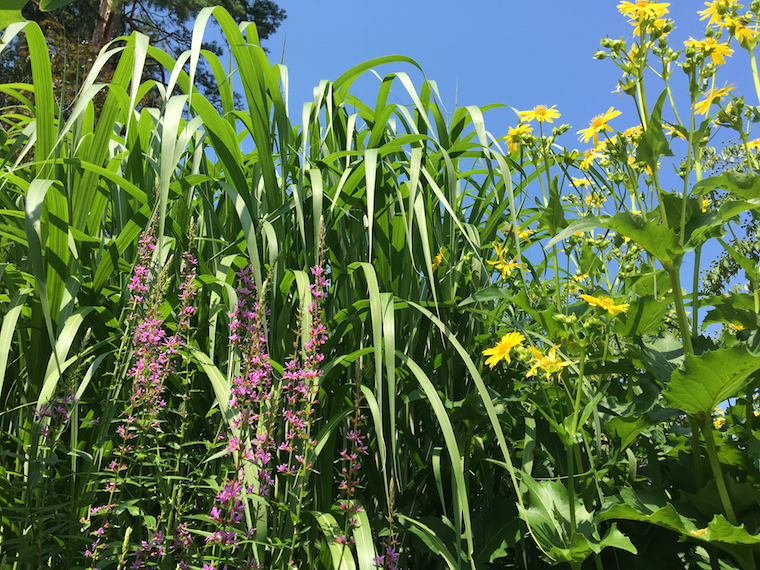This is one of those times when I’m going to tell you to do as I say, not as I do. (Further proof that one doesn’t need children to be contradictory.) It was the summer of 1992 when I first learned about the bane that is the noxious purple loosestrife. At Brown University, my summer biology course at the Roger Williams Zoo was teaching us that most zoos were switching from simply holding animals to teaching the public about conservation and how to preserve the natural world. At the time, purple loosestrife was taking a stranglehold of the northeast, where it was choking out natives in wet wildlands. A trip along the Thruway heading south proved it – a constant flash of bright purple marked most of the roads in mid to late summer. At the zoo, it was taking hold of any place where there was moisture, and we were asked to pull it up whenever we found it. I wasn’t about to do their weeding for them, but it made an indelible mark upon my mind, and from that summer onward whenever I saw it somewhere I would shout out, to whoever was listening, there’s the dreaded purple loosestrife. (Suzie got the biggest, and probably only, kick out of it.)
As an invasive species, purple loosestrife is a danger to our native plants and habitat. Scientifically known as Lythrum salicaria, it was, for a brief period of time, sold by nurseries because its long blooming season and striking color made for a perfect perennial. I still remember a spectacular garden border at a friend’s house – I actually went there more for the garden than the company (sorry, Eric). Next to a sky-high stand of Heliopsis was a clump of Lythrum, and together they formed a glorious backdrop for bees and butterflies to pollinate and charm. I ordered one from White Flower Farm – the variety was ‘Morden’s Pink’ and they claimed it was not as invasive as the typical form encroaching on our highways. Eventually they stopped selling it when it joined the invasive species list.
Now, this is the part where I reveal my moral failings. (One of them, anyway.) Two years ago, a little bird must have dropped a seed of loosestrife in our garden. Whether it came out of its mouth or ass, I couldn’t tell you, but soon a little loosestrife plant was growing. I wasn’t sure what it was at first – the foliage of a young plant is rather handsome, and the stems were fleshier and more substantial than most of the weeds I knew. It looked somewhat refined, so I let it go. As it matured, I thought it looked like a lythrum, so I kept a careful watch on it as WE ARE NOT SUPPOSED TO GROW THEM HERE.
As summer progressed, it grew tall and high, and sent up those gloriously-hued flower spikes. I had a beautiful but dangerous specimen of purple loosestrife in my garden. But it was so pretty, and worked so well beside the cup plant and in front of the fountain grass that, to my continuing shame, I kept it. I even pampered it, sprinkling liberally with water whenever things got too dry. It just works too well to pull it out – providing the perfect spot of color at a time when most things are pooping out. I will also dead-head it and make sure no seeds form to prevent its spread, I promise, and the moment it moves just one inch beyond its allotted space, I will tear it down. For now, I’m enjoying its beauty and coming clean for my conscience.
I repeat, DO NOT GROW THE PURPLE LOOSESTRIFE.
Do as I say, not as I do.
Back to Blog

